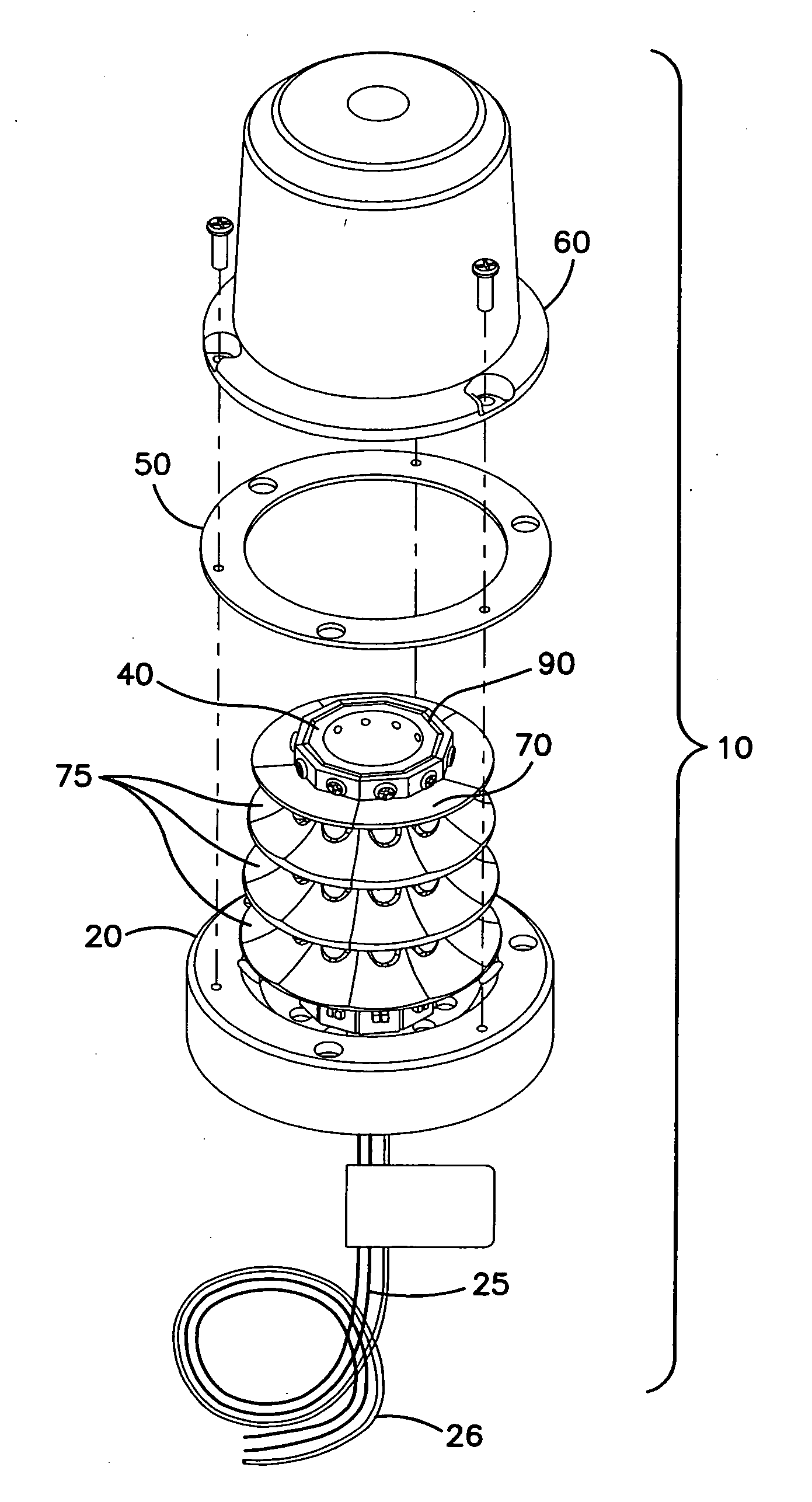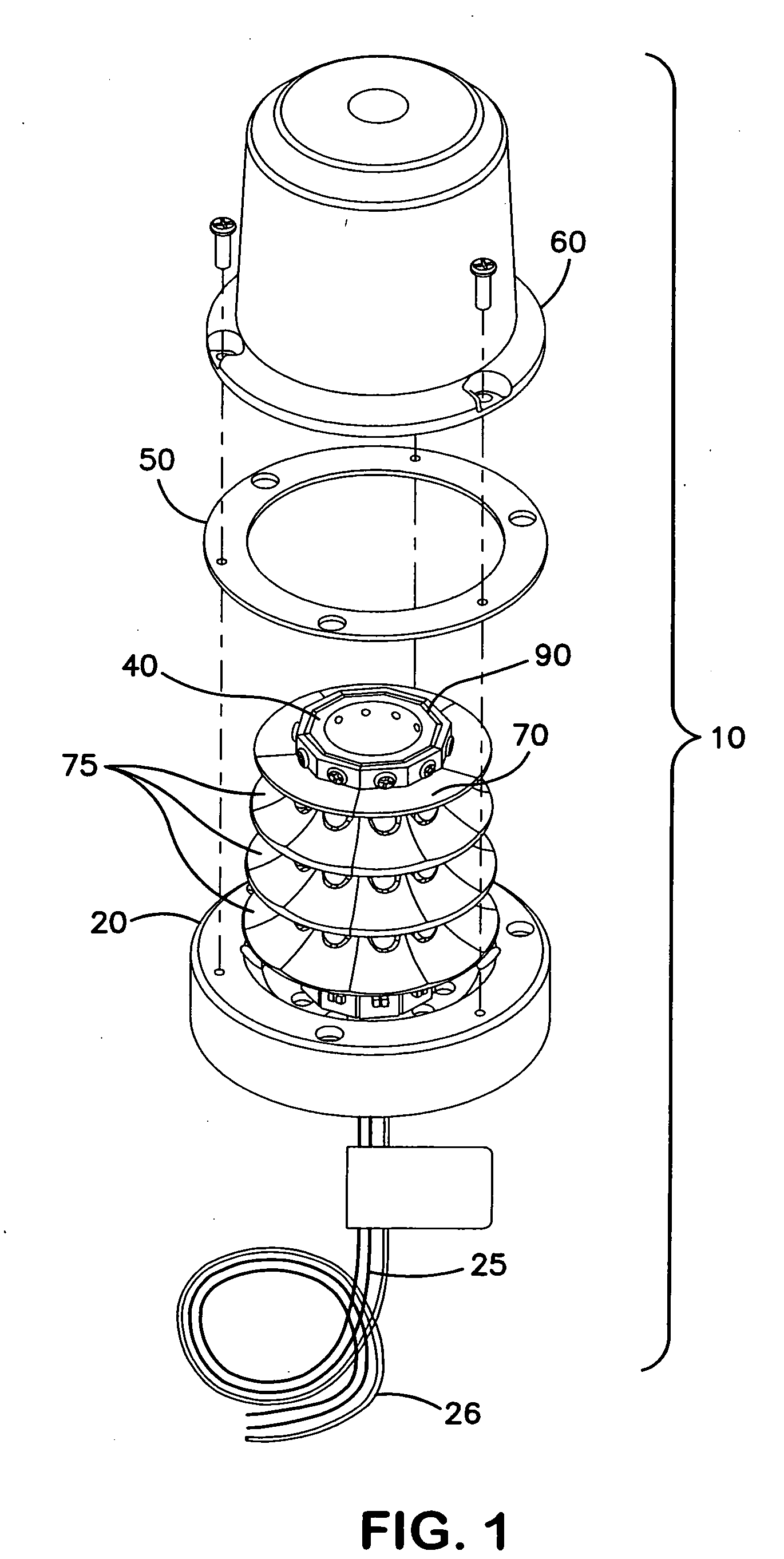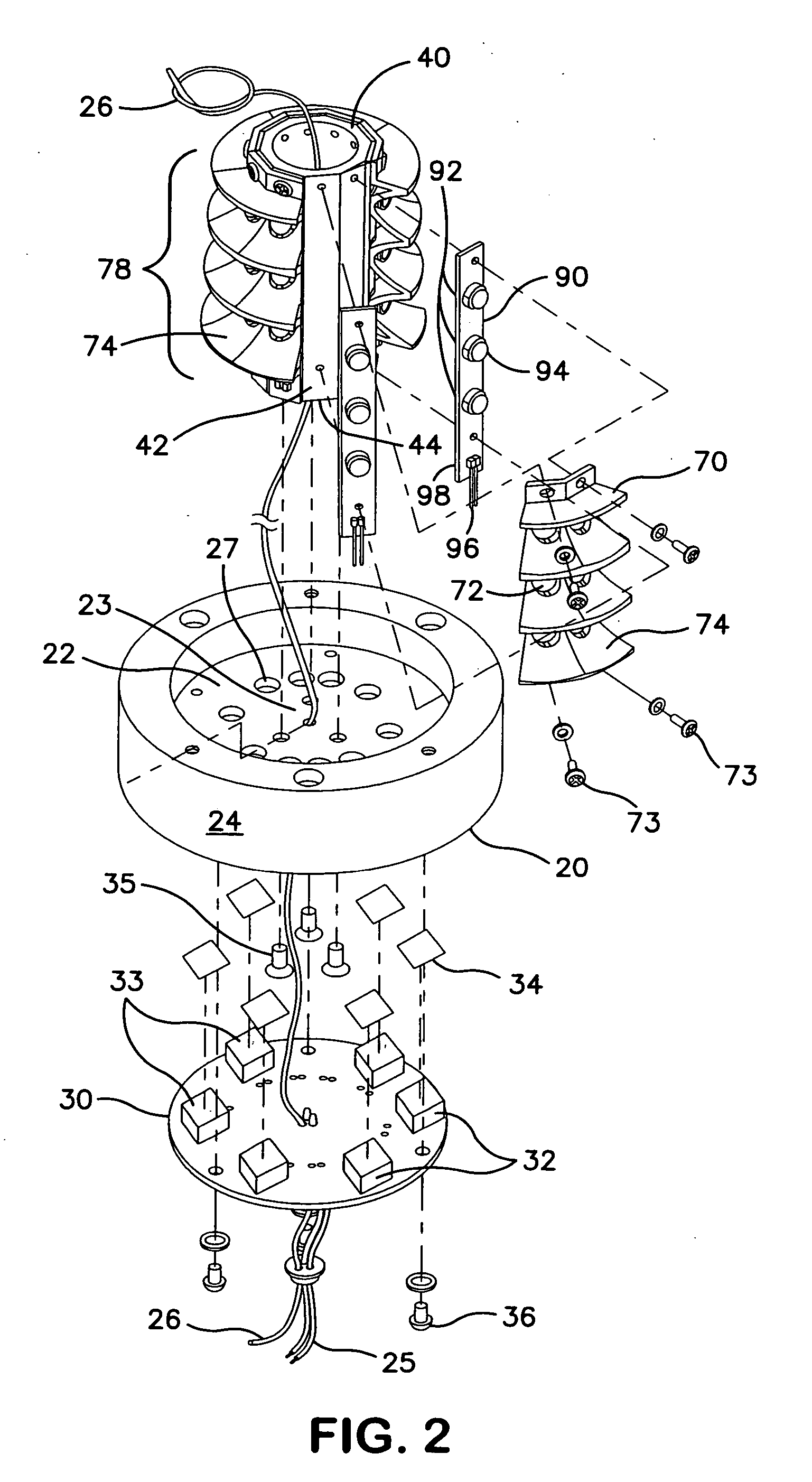LED aircraft anticollision beacon
- Summary
- Abstract
- Description
- Claims
- Application Information
AI Technical Summary
Benefits of technology
Problems solved by technology
Method used
Image
Examples
Embodiment Construction
[0021] A first exemplary embodiment of an anticollision beacon illustrative of aspects of the present invention will be described with reference to FIGS. 1 and 2. FIG. 1 shows the assembled anticollision beacon 10 with the associated lens 60 and gasket 50. FIG. 2 is a detailed exploded view of the anticollision beacon 10. The configurations of the selected components and their assembled relationships are selected to provide an anticollision beacon that is extremely rugged and energy efficient while meeting all applicable performance standards.
[0022] To achieve the required lighting intensity and radiation pattern in a light source utilizing LEDs, it is necessary to use multiple discrete LEDs. One approach to using multiple LEDs to provide an anticollision beacon has been described with reference to U.S. Pat. No. 6,483,254. Heat dissipation is a major consideration because modern high-output LEDs produce significant quantities of heat and LEDs are temperature-sensitive components th...
PUM
 Login to View More
Login to View More Abstract
Description
Claims
Application Information
 Login to View More
Login to View More - R&D
- Intellectual Property
- Life Sciences
- Materials
- Tech Scout
- Unparalleled Data Quality
- Higher Quality Content
- 60% Fewer Hallucinations
Browse by: Latest US Patents, China's latest patents, Technical Efficacy Thesaurus, Application Domain, Technology Topic, Popular Technical Reports.
© 2025 PatSnap. All rights reserved.Legal|Privacy policy|Modern Slavery Act Transparency Statement|Sitemap|About US| Contact US: help@patsnap.com



